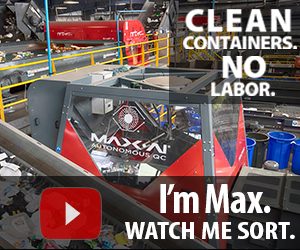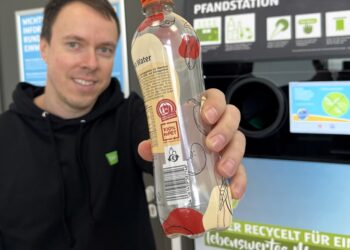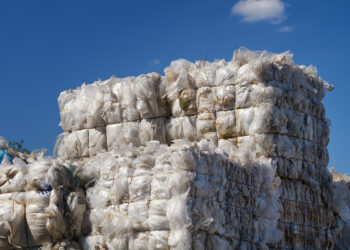Increasing end market demand and improving infrastructure are essential ingredients for a sustainable plastics recycling industry – and for recycling as a whole.
Recently, the Association of Plastic Recyclers (APR) was pleased to collaborate with a host of recycling organizations on a joint letter to Congress regarding the potential inclusion of recycling in infrastructure legislation.
Among the issues identified by the recycling organizations, there are several key areas in which a legislative initiative in terms of infrastructure could have a major impact on the recycling industry.
– Increased use of recycled material in infrastructure products to increase demand. Government procurement is one of the largest potential markets for work-in-progress (WIP) products – items such as pallets, dunnage, crates and slip sheets – that are used in manufacturing applications.
Over the past year, APR has been meeting with members of the U.S. House of Representatives and Senate on Capitol Hill to discuss the potential for procurement preferences to include the use of recycled material in products used for infrastructure projects.
– Retrofitting materials recovery facilities (MRFs) with advanced sorting equipment that can identify and properly handle a wider range of packaging forms, including flexible film and smaller items made of otherwise recyclable material. This would help address the critical issue of bale contamination, and ensure a cleaner product is produced.
The imposition of China’s National Sword has only reinforced what we have all known for a long time: North American collection and sortation infrastructure needs upgrading to deal with the rapid increase in volume and changes in the waste stream. Both legislation and increased demand for recycled material could support continued investment in infrastructure.
– Incentive grants would help state and local governments expand curbside recycling options and the range of materials collected. This would increase supply, increase access to curbside recycling and standardize the types of material that can be recovered across the country.
This type of non-regulatory action would help grow and sustain the industry through addressing the critical areas of need in the recycling stream. Improving waste stream collection and sortation, increasing supply of PCR, and boosting demand for material would protect the industry from volatile export market fluctuations, while also serving to highlight plastics recycling as a key player in addressing critical environmental challenges.
Recycling sector has laid groundwork
As is true in any other industry, the success of recycling depends on supply and demand of a quality product. APR has been tackling these components through several programs aimed at increasing supply, reducing contamination and expanding that all important end market.
One of the primary ways we work to increase demand is the APR Recycling Demand Champions Campaign. The program initially encouraged use of PCR in market applications that historically have received little attention, such as WIP products. More consumer facing products such as grocery or retail store carts and recycling carts are also in the campaign’s scope.
As the program continues to grow, it now includes any and all new applications for PCR. “New” is the key word as we look to grow the current demand market.
By building off industry programs like the Demand Champions Campaign and strategically placing recycling at the heart of a federal infrastructure package, national lawmakers can help push forward the economy using materials and expertise our country already has on hand.
Steve Alexander is president of the Association of Plastic Recyclers and can be contacted at [email protected].
The views and opinions expressed are those of the author and do not imply endorsement by Resource Recycling, Inc. If you have a subject you wish to cover in an op-ed, please send a short proposal to [email protected] for consideration.


























